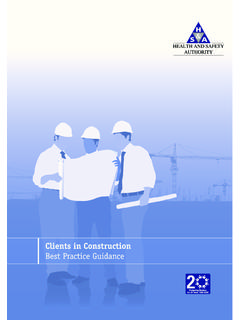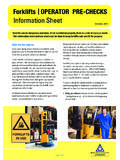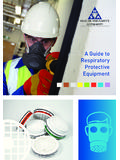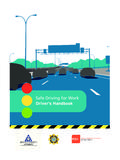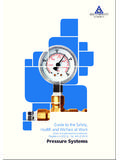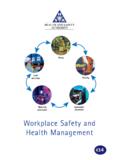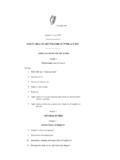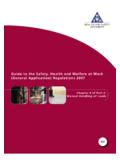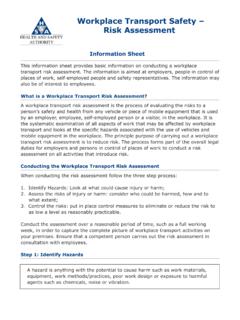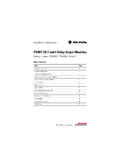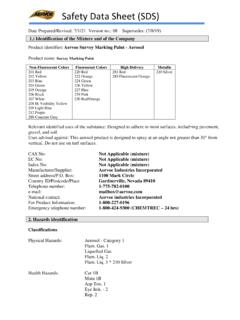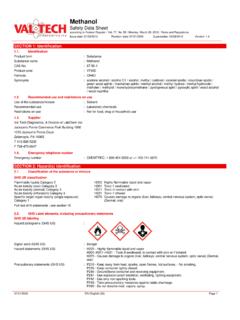Transcription of CLP Regulation (EC) No. 1272/2008 on the classification ...
1 CLP Regulation (EC) No. 1272 / 2008 on the classi cation, labelling and packaging of substances and mixturespage 1 Rev. 2, Nov 2021 CLP Regulation (EC) No. 1272/2008on the classification , labelling and packagingof substances and mixtures Unstable explosive Unst. Expl. H200 Unstable explosive Division Expl. H201 Explosive; mass explosion hazard Division Expl. Danger H202 Explosive; severe projection hazardDivision Expl. H203 Explosive; fire, blast or projection hazard Division Expl.
2 Warning H204 Fire or projection hazard Division Expl. No Pictogram Danger H205 May mass explode in fire Division Expl. No Pictogram - - No hazard statementHazard-Abbreviationof classification (without H set)Pictogram,code*Signal-wordCode*TextW arning of dangerClassCategoryClassificationLabelli ngAerosolExplosives Category 1 Aerosol 1 Danger Category 2 Aerosol 2 Warning Category 3 Aerosol 3 No Pictogram Warning Oxidising Gases Category 1 Ox.
3 Gas 1 Danger H270 May cause or intensify fire; oxidiser Compressed gas H280 Contains gas under pressure; may explode if heated H281 Contains refrigerated gas; may cause cryogenic burns or injury. Dissolved gas H280 Contains gas under pressure; may` explode if heated(1) = The hazard class Gases under Pressure is subdivided into Groups (not Categories ) Category 1 Flam. Liq. 1 Danger H224 Extremely flammable liquid and vapour Category 2 Flam. Liq. 2 H225 Highly flammable liquid and vapour Category 3 Flam.
4 Liq. 3 Warning H226 Flammable liquid and vapourFlammable Category 1 Flam. Sol. 1 Danger H228 Flammable solid Category 2 Flam. Sol. 2 Warning Type A Self-react. A DangerH240 Heating may cause an explosion Org. Perox. A Type B B H241 Heating may cause a fire or explosion Org. Perox. B Type C and D Self-react. C&D Danger H242 Heating may cause a fire Org. Perox. C&D Type E and F Self-react.
5 E&F Warning Org. Perox. E&F Type G Self-react. G Org. Perox. G No Pictogram - No hazard statement(2) = Two separate hazard classes have the same categories (and are therefore grouped).Pyrophoric Liquids Category 1 Pyr. Liq. 1 Danger H250 Catches fire spontaneously if exposed to airPyrophoric Solids Category 1 Pyr. Sol. 1 Category 1 Self-heat. 1 Danger H251 Self-heating; may catch fire Category 2 Self-heat.
6 2 Warning H252 Self-heating in large quantities; may catch fire Category 1 Water-react. 1 Danger H260In contact with water releases flammable gases which may ignite spontaneously Category 2 Water-react. 2 Danger H261 In contact with water releases Category 3 Water-react. 3 Warning flammable gasesCategory 1Ox. Liq. 1 Danger H271 May cause fire or explosion; strong oxidiser Ox.
7 Sol. 1 Category 2 Ox. Liq. 2 Danger H272 May intensify fire; oxidiser Ox. Sol. 2 Category 3Ox. Liq. 3 Warning Ox. Sol. 3 Category 1 Met. Corr. 1 Warning H290 May be corrosive to metals Category 1 Acute Tox. 1 H300 Category 2 Acute Tox. 2 H310 H330 Category 3 Acute Tox.
8 3 H301 Toxic if swallowed H311 Toxic in contact with skin H331 Toxic if inhaled Category 4 Acute Tox. 4 Warning H302 Harmful if swallowed H312 Harmful in contact with skin H332 Harmful if inhaled Category 1(3) Skin Corr. 1 Danger H314 Category 1A Skin Corr. 1A Category 1C Skin Corr.
9 1C Category 2 Skin Irr. 2 Warning H315 Causes skin irritationDesensitised ExplosivesCategory 1 Category 2 Category 3 Category 4 Desen. Expl. 1 Desen. Expl. 2 Desen. Expl. 3 Desen. Expl. 4 DangerWarningH206H207H208 Fire, blast or projection hazard; increased risk of explosion ifdesensitising agent is reducedFire or projection hazard; increased risk of explosion if desensitising agent is reducedFire hazard; increased risk of explosion if desensitising agent is reducedFlammable Gases (including chemically unstable gases)Category 1 Aflammable gas and gases categorised as 1A meeting pyrophoric or unstable gas A/B criteriaCategory 1 BCategory 2 Flam.
10 Gas 1 APyr. GasChem. Unst. Gas AChem. Unst. Gas BFlam. Gas 1 BFlam. Gas 2 DangerDangerWarningNo PictogramH220H220H232H220H230H220H231H22 1H221 Extremely flammable gasExtremely flammable gasMay ignite spontaneously if exposed to airExtremely flammable gasMay react explosively even in the absence of airExtremely flammable gasMay react explosively even in the absence of air at elevated pressure and/or temperatureFlammable gasFlammable gasH222H229H223H229H229 Extremely flammable aerosolPressurised container: May burst if heatedFlammable aerosolPressurised container: May burst if heatedPressurised container: May burst if heatedSolidspage 2 CLP Regulation (EC) No. 1272 / 2008 on the classi cation, labelling and packaging of substances and mixtures Hazard-Abbreviationof classification (without H set)Pictogram,code*Signal-wordCode*TextW arning of dangerClassCategoryClassificationLabelli ng Unstable explosive Unst.
